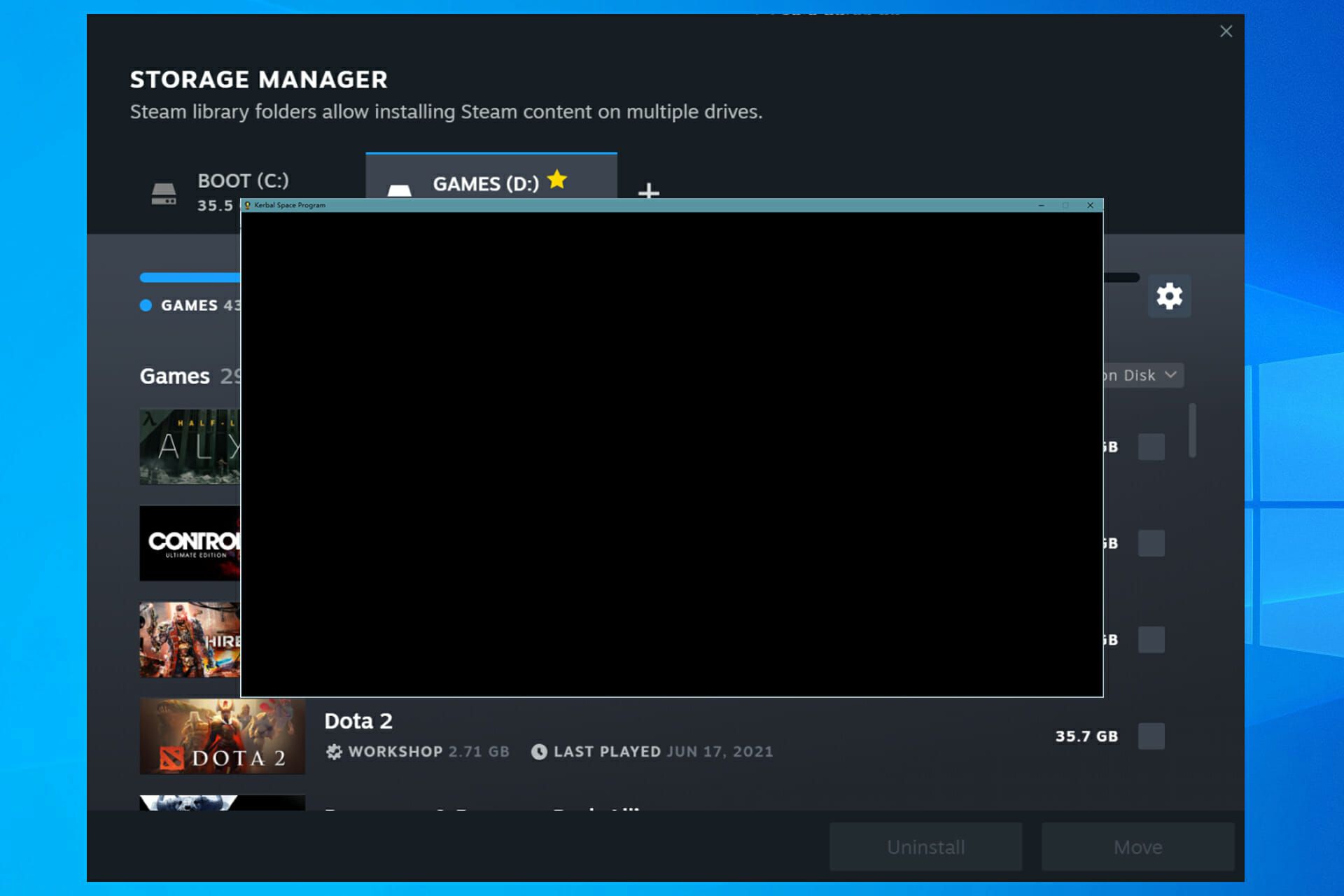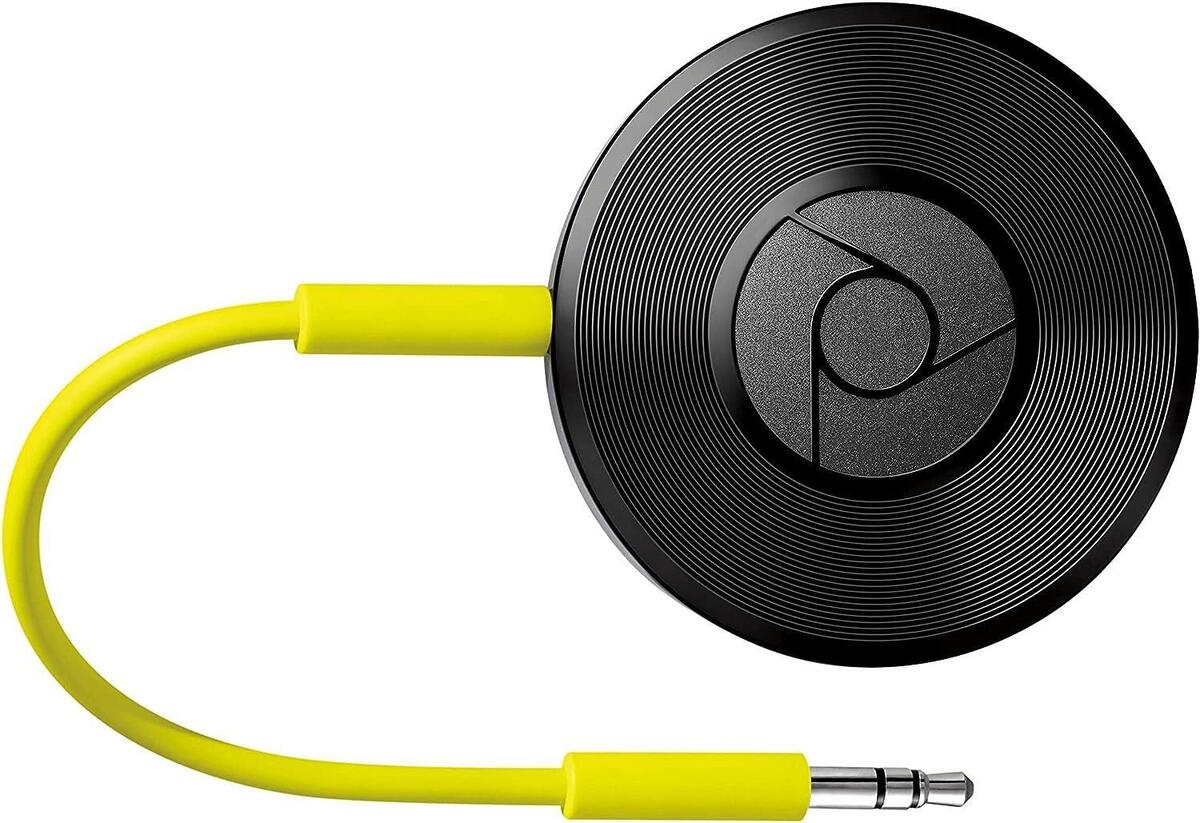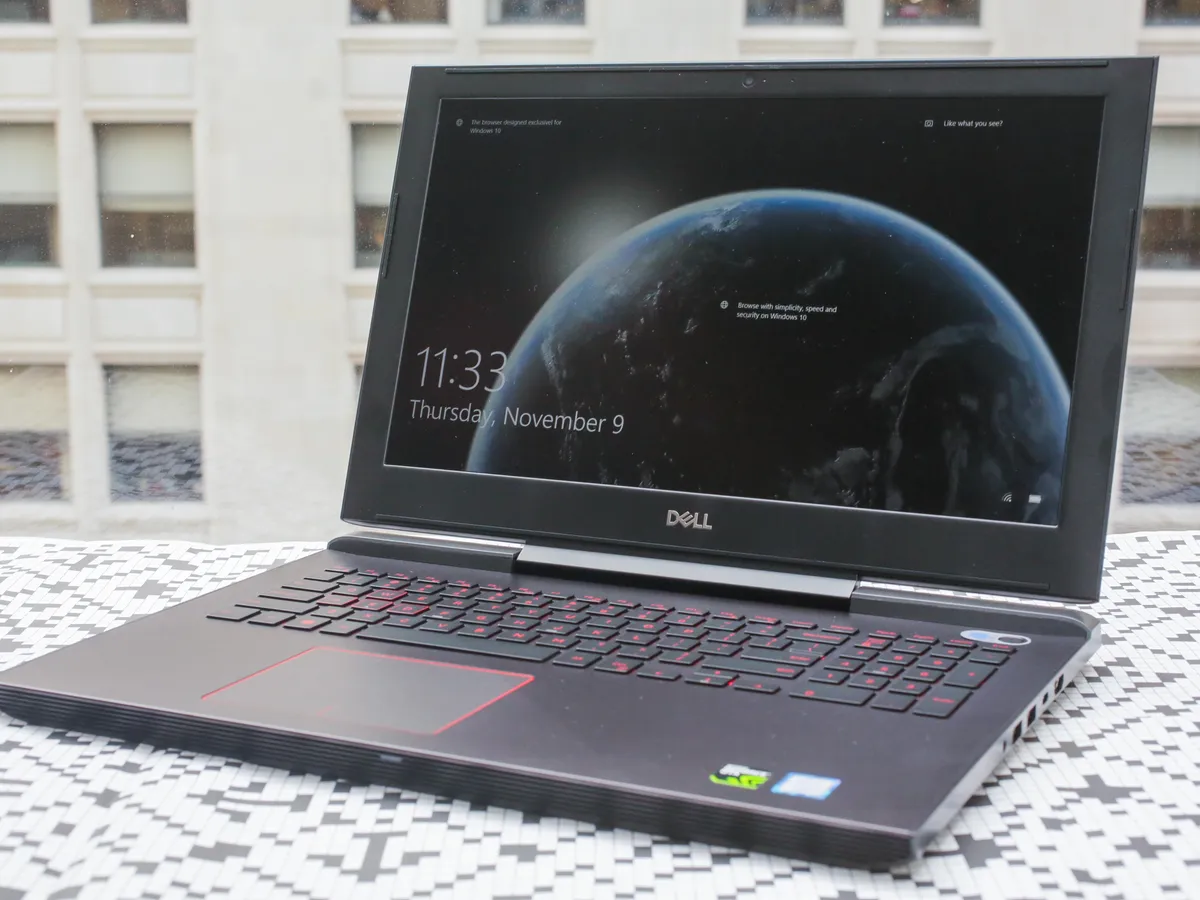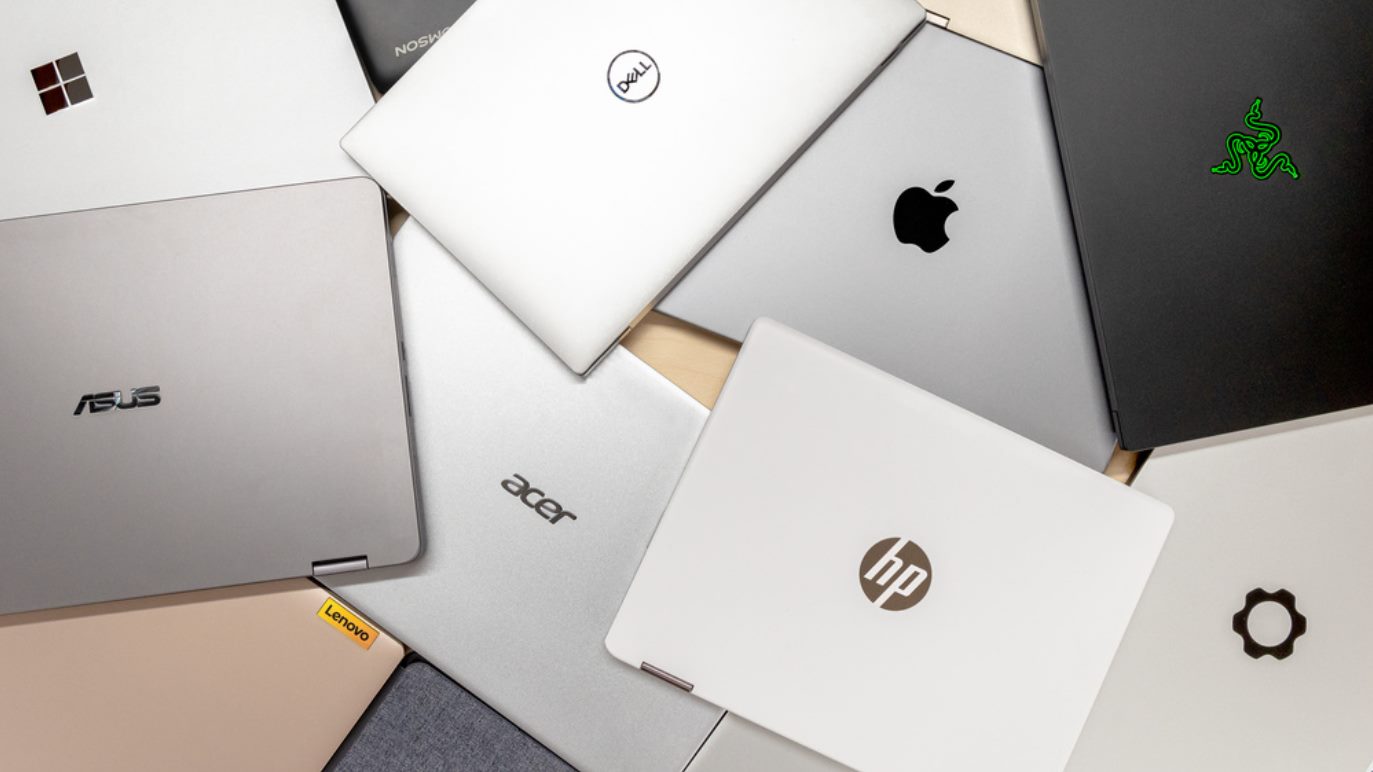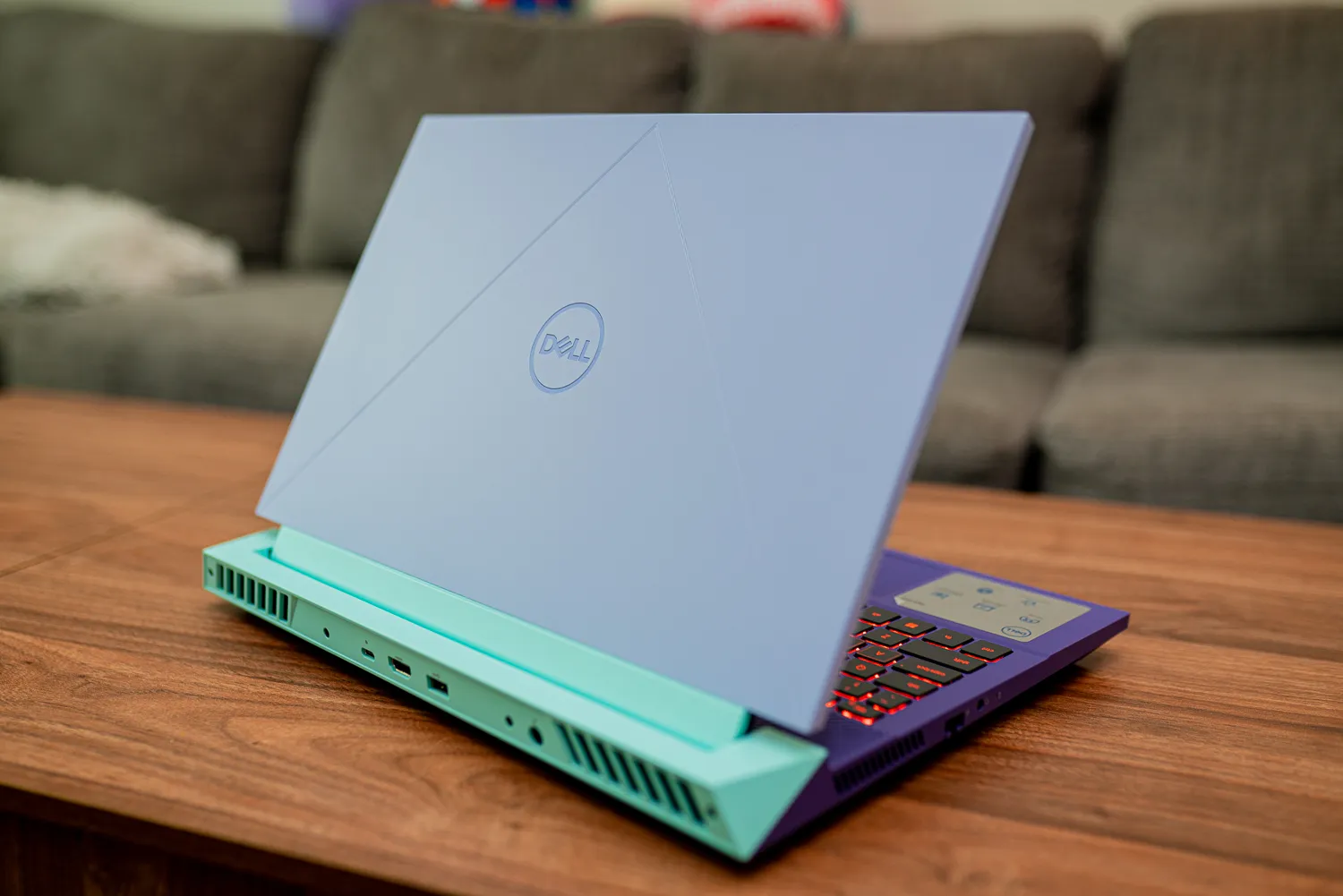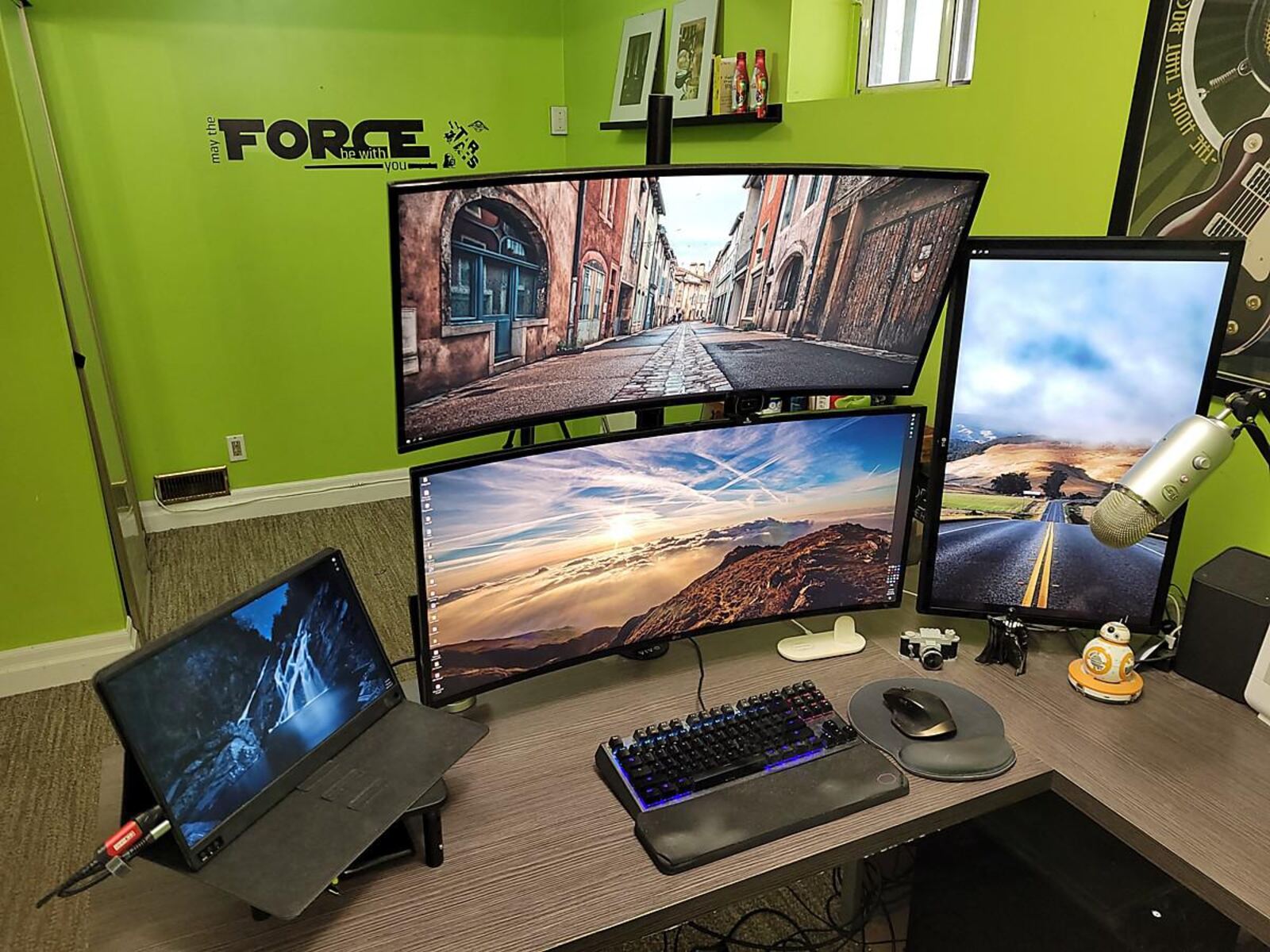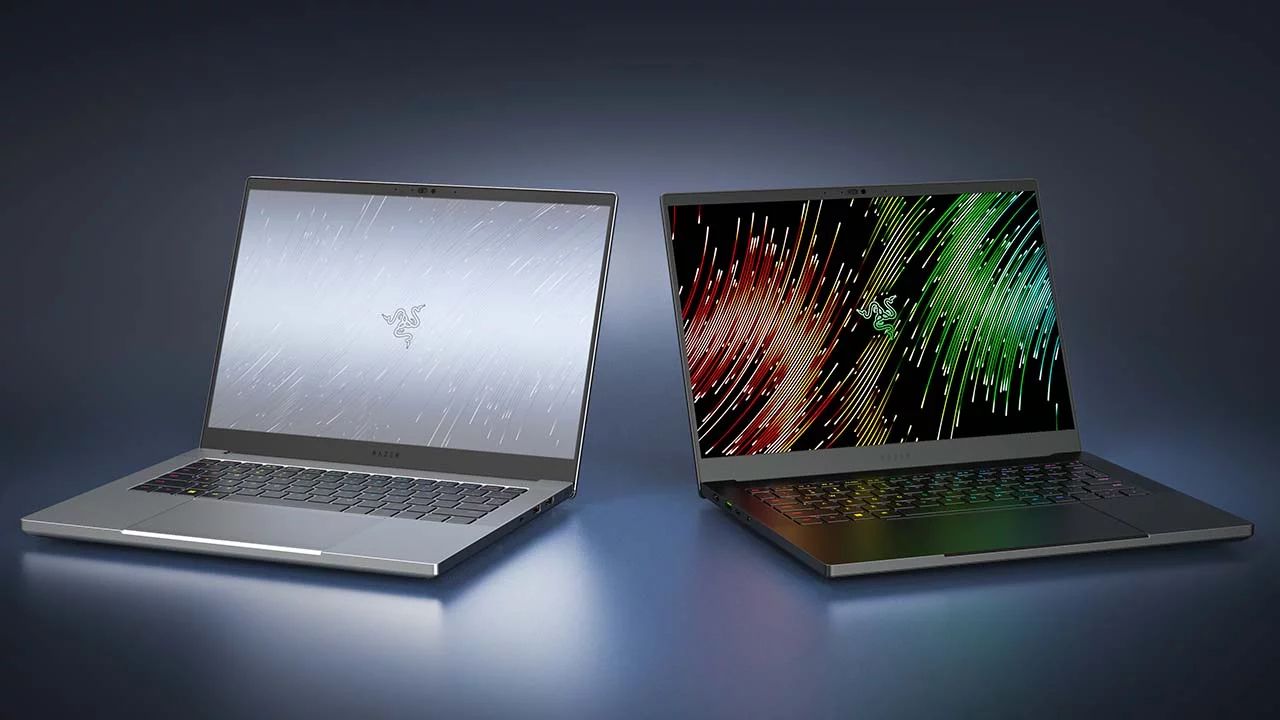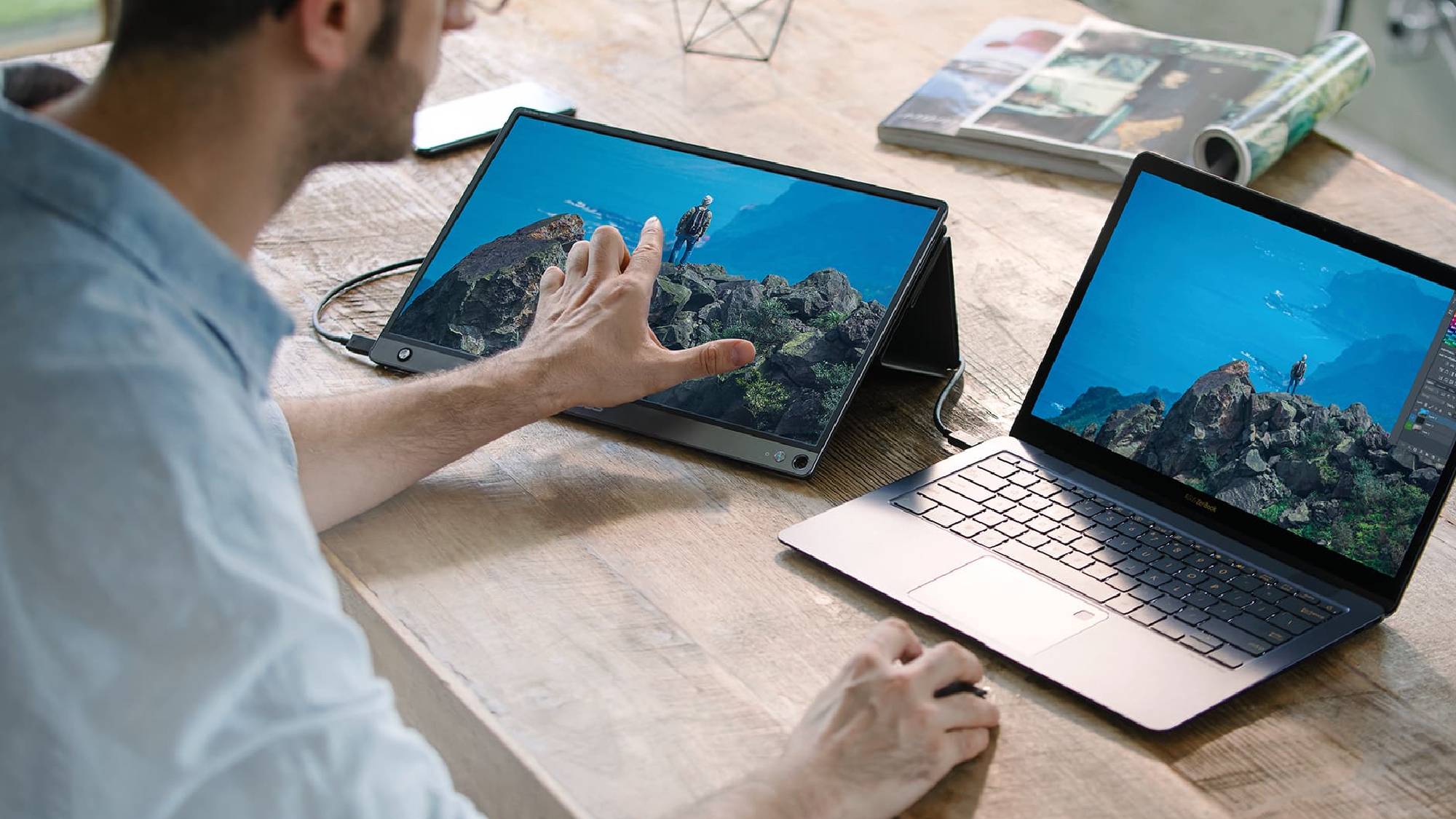Introduction
Welcome to the world of gaming laptops, where high-performance meets immersive gaming experiences. As a gaming enthusiast, nothing can be more frustrating than encountering a black screen issue when you’re in the middle of an intense gaming session. This unexpected problem can bring your gaming momentum to a screeching halt, leaving you puzzled and eager to find a solution.
A black screen issue can manifest in various ways, such as the screen going completely black while the laptop remains powered on, or it may occur with a flickering or distorted display. The causes behind this problem can be multifaceted, ranging from driver issues to hardware failures.
In this article, we will explore some of the common reasons why your gaming laptop screen goes black and discuss troubleshooting steps to help you resolve the issue. Understanding the root causes of this problem will empower you to take proactive measures and ensure uninterrupted gaming sessions.
Please note that while the following troubleshooting steps are intended to resolve the black screen issue, it is essential to exercise caution and consult a professional if you are unsure about performing any hardware-related interventions on your gaming laptop.
Reasons for a Black Screen
There are several potential reasons why your gaming laptop screen may go black. Understanding these causes can help you identify the underlying issue and take appropriate actions to resolve it. Let’s explore some of the most common reasons:
- Driver Issues: Outdated or corrupted graphics drivers can cause conflicts with your gaming laptop’s operating system, resulting in a black screen. It’s crucial to keep your drivers up to date to ensure optimal performance and compatibility.
- Graphics Card Problems: An issue with your graphics card, such as improper installation, overheating, or hardware failure, can lead to a black screen. Graphics cards are crucial components for gaming, and any malfunction can disrupt the display functionality.
- Overheating: Gaming laptops are designed to handle intensive graphics and processing, but extended gaming sessions can often push their limits. Overheating can cause your gaming laptop to shut down or display a black screen as a protective measure.
- Power Supply Issues: Inadequate power supply or faulty cables can result in a lack of power to your gaming laptop, causing it to display a black screen or fail to turn on altogether. It’s essential to ensure a stable power connection and use a compatible power supply.
- Outdated BIOS: The Basic Input/Output System (BIOS) contains the firmware that controls your gaming laptop’s hardware. If your BIOS is outdated or incompatible, it can lead to various issues, including a black screen during gaming.
- Hardware Failure: Faulty hardware components, such as the display panel or motherboard, can also contribute to a black screen issue. Aging components, physical damage, or wear and tear can lead to malfunctions and the appearance of a black screen.
These are just a few of the potential reasons for the black screen problem on your gaming laptop. Identifying the specific cause is crucial for implementing the correct troubleshooting steps and resolving the issue.
Driver Issues
Outdated or corrupted graphics drivers are a common culprit behind the black screen issue on gaming laptops. Graphics drivers serve as a bridge between your operating system and the graphics card, enabling them to communicate effectively. When drivers become outdated or corrupted, conflicts arise, leading to various display-related problems, including black screens.
To address driver issues:
- Update Graphics Drivers: Visit the manufacturer’s website or use a reliable driver update tool to download and install the latest graphics drivers for your gaming laptop. Make sure to choose the correct drivers that match your graphics card model and operating system version. Updating drivers can often resolve compatibility issues and improve performance.
- Uninstall and Reinstall Drivers: If updating drivers doesn’t solve the problem, consider uninstalling the existing graphics drivers completely and then reinstalling them. Use a driver uninstallation tool or the Device Manager in your operating system to remove the drivers. After uninstalling, restart your laptop and install the latest drivers from scratch.
- Rollback Driver: If the black screen issue started occurring after updating the graphics drivers, it’s possible that the new drivers are causing the problem. In this case, you can try rolling back to the previous version of the drivers. Open the Device Manager, locate your graphics card, right-click, and choose the option to roll back the driver. Restart your laptop after the rollback process completes.
- Disable Automatic Driver Updates: Sometimes, automatic driver updates can cause conflicts with gaming laptops. To prevent this, you can disable automatic driver updates in the system settings or use dedicated driver management software to take control of the updating process.
By addressing driver issues, you can eliminate one of the potential causes of the black screen problem on your gaming laptop. However, if the issue persists, it’s important to explore other possible causes and continue troubleshooting.
Graphics Card Problems
Your gaming laptop’s graphics card is a crucial component responsible for rendering high-quality graphics and delivering an immersive gaming experience. When there are problems with the graphics card, it can result in a black screen or other display issues. Here are some potential graphics card problems and their troubleshooting steps:
- Improper Installation: If you recently installed a new graphics card or made changes to your existing one, it’s possible that improper installation is causing the black screen. Make sure the graphics card is securely and correctly inserted into the PCIe slot. If necessary, remove and reseat the graphics card to ensure a proper connection.
- Overheating: Graphics cards can generate a significant amount of heat during intense gaming sessions. If the temperature exceeds safe levels, the graphics card may shut down or experience malfunctions, including a black screen. Use monitoring software to check the graphics card’s temperature. If it’s running hot, clean the cooling fans and ensure proper airflow to prevent overheating. Consider using a cooling pad or external fans to lower temperatures.
- Hardware Failure: In some cases, a black screen can result from a hardware failure within the graphics card. This could be due to aging components, physical damage, or manufacturing defects. If you suspect a hardware issue, it’s best to contact the manufacturer or a professional technician for further diagnosis and repair.
- Driver Compatibility: In rare instances, certain graphics card models may experience compatibility issues with specific driver versions. If you suspect this to be the case, try installing different driver versions from the manufacturer’s website to see if it resolves the black screen problem. Experiment with different driver releases until you find a stable and compatible version.
It’s important to note that troubleshooting graphics card problems requires caution, as tinkering with hardware components can cause damage if not done correctly. If you’re unsure or uncomfortable performing these steps, seek assistance from a professional technician who can diagnose and repair any graphics card-related issues.
Overheating
Overheating is a common issue that can lead to a black screen problem on gaming laptops. Extended gaming sessions can put a significant strain on your laptop’s hardware, causing the temperature to rise rapidly. When the internal components, particularly the CPU and graphics card, exceed safe temperature thresholds, your laptop may automatically shut down or display a black screen as a protective measure.
To address overheating issues and prevent black screens:
- Clean the Cooling System: Dust and debris can accumulate in the cooling system, impairing airflow and causing overheating. Use compressed air or a soft brush to remove dust from the cooling vents, fans, and heat sinks. Regularly cleaning the cooling system can help maintain optimal temperatures.
- Use a Cooling Pad: A cooling pad is an accessory that helps to dissipate heat and improve airflow around your laptop. It provides additional cooling support and can significantly reduce the temperature of your gaming laptop. Invest in a quality cooling pad with adjustable fan speeds for optimal cooling efficiency.
- Optimize Graphics Settings: Lowering the graphics settings in your games can reduce the strain on your graphics card and CPU, thus reducing heat generation. Adjusting graphics settings to a more optimal level can help prevent overheating and avoid black screen issues.
- Elevate the Laptop: Elevating your laptop using a laptop stand or propping it up on a book can enhance airflow underneath and around the laptop, promoting better heat dissipation. This simple solution can help prevent overheating and maintain stable temperatures during gaming sessions.
- Monitor Temperatures: Install temperature monitoring software to keep track of your laptop’s internal temperatures. This will allow you to identify any potential overheating issues and take necessary action before a black screen occurs. If you notice temperatures consistently reaching high levels, consider using additional cooling solutions or adjusting your gaming habits.
Addressing overheating problems and maintaining appropriate temperatures is crucial for the longevity and performance of your gaming laptop. By implementing these preventive measures, you can reduce the likelihood of encountering a black screen due to overheating.
Power Supply Issues
Power supply issues can contribute to a black screen problem on your gaming laptop. Insufficient power delivery or faulty cables can disrupt the normal functioning of your laptop, leading to display issues or even a complete failure to turn on. To address power supply issues, consider the following troubleshooting steps:
- Verify Power Supply Connection: Ensure that the power cable is securely connected to both your gaming laptop and the power outlet. Sometimes, a loose or faulty connection can lead to intermittent power supply, resulting in a black screen. Check for any signs of damage or fraying on the power cable and replace it if necessary.
- Use a Stable Power Outlet: Unstable or fluctuating power outlets can cause voltage irregularities and affect your laptop’s performance. Connect your gaming laptop to a stable power outlet, preferably using a surge protector or a UPS (Uninterruptible Power Supply) to ensure a consistent and clean power supply.
- Check Battery Status: If you’re using a laptop that has a built-in battery, check the battery status. A dying or degraded battery can cause power supply issues, leading to unexpected black screens. If your laptop allows, remove the battery and operate solely on AC power to see if the black screen issue persists.
- Use a Different Power Adapter: If you suspect a faulty power adapter, try using a different adapter that is compatible with your laptop’s power requirements. Borrow one from a friend or purchase a replacement to see if it resolves the black screen problem. Be sure to select an adapter with the correct voltage and amperage for your specific laptop model.
- Consult a Professional: If you’ve exhausted all troubleshooting steps and suspect a hardware issue with the power supply, it’s best to consult a professional technician. They can diagnose the problem accurately and make any necessary repairs or replacements to ensure proper power delivery to your gaming laptop.
By carefully examining and addressing power supply issues, you can eliminate this potential cause of the black screen problem. However, if the issue persists, it’s crucial to continue troubleshooting and explore other possible causes.
Outdated BIOS
Outdated or incompatible BIOS (Basic Input/Output System) firmware can contribute to black screen issues on your gaming laptop. The BIOS firmware is responsible for initializing the hardware components of your laptop during the boot process. If the BIOS is outdated or incompatible with your operating system or hardware, it can result in various display-related problems.
To address outdated BIOS issues, consider the following troubleshooting steps:
- Check for BIOS Updates: Visit the manufacturer’s website and navigate to the support section for your gaming laptop model. Look for BIOS updates specifically designed for your laptop. Follow the instructions provided by the manufacturer to update the BIOS firmware. Make sure to choose the correct BIOS version that corresponds to your laptop model and operating system.
- Exercise Caution: Updating the BIOS requires caution as it is a critical component of your laptop’s functionality. Before updating, read the manufacturer’s instructions carefully and ensure that you fully understand the process. Improper BIOS updates can potentially render your laptop inoperable, so it’s crucial to follow the instructions precisely.
- Use BIOS Update Tools: Some manufacturers provide dedicated software tools that automate the BIOS update process. These tools can simplify the updating process and minimize the risk of errors. Check if your gaming laptop’s manufacturer offers such a tool and follow the instructions provided to update the BIOS firmware.
- Consult the Manufacturer: If you’re unsure or uncomfortable with updating the BIOS on your own, consider contacting the manufacturer’s customer support or visiting a service center. They can guide you through the process, provide assistance, or perform the BIOS update for you.
Updating the BIOS can resolve compatibility issues, improve system stability, and potentially address the black screen problem on your gaming laptop. However, it’s important to proceed with caution and ensure that you follow the manufacturer’s instructions accurately to avoid any potential complications.
Hardware Failure
Hardware failure can be a challenging cause to troubleshoot when facing a black screen issue on your gaming laptop. Faulty hardware components can disrupt the normal functioning of your laptop’s display, leading to black screens or other display anomalies. Here are some potential hardware failures that may contribute to the problem:
- Display Panel Failure: The display panel itself may be defective or experiencing issues. This can be due to damage, aging, or manufacturing defects. If you suspect a problem with the display panel, consult a professional technician who can diagnose the issue and recommend necessary repairs or replacements.
- Motherboard Failure: The motherboard acts as the central hub that connects and controls all the hardware components in your gaming laptop. A malfunctioning motherboard can cause a variety of issues, including black screen problems. If you suspect a motherboard failure, it’s best to seek professional assistance to diagnose and address the problem.
- Graphics Card Failure: As one of the key components for gaming, the graphics card can experience failure due to various reasons. This can result in display issues, including black screens. If you suspect a graphics card failure, consult a professional technician who can perform diagnostic tests and recommend the appropriate action, which may involve repairs or replacements.
- Memory or Storage Malfunction: Issues with the RAM (Random Access Memory) or storage drives can also contribute to a black screen problem. Faulty or incompatible RAM modules or storage drives can cause system instability and display issues. Try reseating the RAM modules or swapping them out with known-good ones to see if the problem resolves. If the issue persists, consult a professional technician for further diagnostics.
Hardware failures can be complex and require expert knowledge to diagnose and resolve. If you suspect a hardware failure is causing the black screen problem on your gaming laptop, it’s best to seek professional assistance. Attempting to fix hardware issues without proper expertise may result in further damage or void warranties, so it’s crucial to consult with trained technicians for the best course of action.
Troubleshooting Steps
When facing a black screen issue on your gaming laptop, it’s important to follow systematic troubleshooting steps to identify and resolve the problem. Here are some general troubleshooting steps that you can take:
- 1. Update Graphics Drivers: As mentioned earlier, outdated or corrupted graphics drivers can cause black screen issues. Update your graphics drivers to the latest version provided by the manufacturer to ensure compatibility and optimal performance.
- 2. Check Graphics Card Temperatures: Monitor the temperatures of your graphics card using specialized software. If it’s running hot, clean the cooling system and ensure proper ventilation to prevent overheating.
- 3. Verify Power Supply Connection: Ensure that the power cable is securely connected to your laptop and the power outlet. Check for any signs of damage or fraying on the cable and replace it if necessary.
- 4. Update BIOS: Check for any available BIOS updates for your gaming laptop and follow the manufacturer’s instructions to update the firmware. This can address compatibility issues and improve system stability.
- 5. Check Hardware Components: Inspect hardware components such as the display panel, motherboard, graphics card, RAM modules, and storage drives for any signs of damage. Consult a professional technician if you suspect any hardware failures.
It’s important to note that these troubleshooting steps provide a general starting point, but every gaming laptop configuration is unique. Refer to your specific laptop’s documentation and consult the manufacturer’s support for more detailed and model-specific troubleshooting steps.
If the black screen issue persists even after trying the troubleshooting steps, it’s recommended to consult a professional technician or contact the manufacturer’s customer support for further assistance. They will have the expertise and resources to diagnose and resolve the issue specific to your gaming laptop.
Update Graphics Drivers
Updating your graphics drivers is a crucial step in troubleshooting the black screen issue on your gaming laptop. As graphics drivers serve as a bridge between your operating system and the graphics card, keeping them up to date ensures compatibility, stability, and optimal performance. Here’s how you can update your graphics drivers:
- Visit Manufacturer’s Website: Navigate to the manufacturer’s website of your graphics card, such as NVIDIA or AMD, and search for the driver download page. Find the correct driver for your specific graphics card model and operating system.
- Download the Latest Driver: Once you’ve identified the correct driver, download the latest version provided by the manufacturer. Ensure that you choose the appropriate driver based on your operating system version (e.g., Windows 10 64-bit) to avoid compatibility issues.
- Uninstall Current Drivers: Before installing the new driver, it’s recommended to uninstall the current graphics drivers to avoid conflicts. You can do this by going to the Device Manager, locating the Graphics Adapters category, right-clicking on your graphics card, and selecting the “Uninstall” option.
- Install the Updated Driver: After uninstalling the current drivers, run the downloaded driver installation file. Follow the on-screen instructions provided by the driver installer. Make sure to select the correct options during the installation process, such as the installation location and additional features you may want to install.
- Restart Your Laptop: After the driver installation completes, restart your gaming laptop to ensure that the new drivers are properly applied. Upon restarting, your laptop will load the updated graphics drivers, which should address any compatibility issues that might have been causing the black screen problem.
It’s important to note that drivers are regularly updated by manufacturers to fix bugs, improve performance, and enhance compatibility with new software and hardware releases. Therefore, it’s recommended to periodically check for driver updates to ensure your gaming laptop is running on the latest, most stable drivers.
If updating the graphics drivers doesn’t resolve the black screen issue, proceed with the other troubleshooting steps to further investigate potential causes and solutions.
Check Graphics Card Temperatures
Checking the temperatures of your graphics card is an essential step in troubleshooting the black screen issue on your gaming laptop. Graphics cards can generate a significant amount of heat during intensive gaming sessions, and if the temperature exceeds safe levels, it can lead to performance issues, including black screens. Here’s how you can check and manage graphics card temperatures:
- Use Monitoring Software: Install a reliable temperature monitoring software, such as MSI Afterburner or HWMonitor, that provides real-time temperature readings for your graphics card. These programs also allow you to monitor other vital statistics, such as fan speeds and GPU usage.
- Observe Temperature Readings: While gaming or running graphics-intensive applications, monitor the temperature readings of your graphics card. Keep an eye on the maximum temperatures reached and whether they exceed safe operating limits. Refer to the graphics card manufacturer’s documentation or website to determine the optimal temperature range for your specific model.
- Clean the Cooling System: Over time, dust and debris can accumulate in the cooling system of your gaming laptop, hindering proper airflow and causing the graphics card to overheat. Regularly clean the cooling vents, fans, and heat sinks using compressed air or a soft brush to remove any buildup. A clean cooling system can significantly improve heat dissipation and prevent overheating.
- Ensure Proper Ventilation: Make sure that your gaming laptop has adequate ventilation and is not obstructed by objects that could impede airflow. Place your laptop on a flat, hard surface to allow air to circulate freely around it. Using a laptop cooling pad can also help improve airflow and reduce temperatures during gaming sessions.
- Consider Undervolting or Underclocking: Undervolting and underclocking are techniques that can help lower the temperature of your graphics card by reducing voltage or clock speeds, respectively. This can be done using software utilities provided by the graphics card manufacturer or third-party applications. However, be cautious when implementing these techniques, as improper settings can negatively impact performance.
It’s important to address high graphics card temperatures to prevent overheating, which can lead to black screens or even permanent damage to the hardware. By regularly monitoring and managing temperatures, you can ensure that your graphics card operates within safe parameters and minimize the occurrence of the black screen issue during gaming sessions.
If you find that temperature is not the cause of the black screen problem or the temperatures remain within safe limits, proceed with the other troubleshooting steps to further investigate potential causes and solutions.
Verify Power Supply Connection
Ensuring a stable power supply connection is crucial when troubleshooting the black screen issue on your gaming laptop. A faulty or loose power connection can disrupt the normal functioning of your laptop, leading to display issues or a complete failure to turn on. Here’s what you should do to verify the power supply connection:
- Check Cable Connections: Inspect the power cable connecting your gaming laptop to the power outlet. Make sure it is securely plugged into both the laptop and the power source. If the cable is loose, firmly push it into place. Additionally, examine the cable for any signs of damage, such as fraying or exposed wires. If damaged, replace the cable to ensure a safe and reliable power connection.
- Try a Different Power Outlet: Sometimes, the power outlet may be the source of the problem. Connect your gaming laptop to a different power outlet and see if it resolves the black screen issue. Unstable or faulty power outlets can cause voltage irregularities that affect your laptop’s performance. Using a surge protector or an Uninterruptible Power Supply (UPS) can also help stabilize the power supply.
- Inspect the Power Adapter: If your gaming laptop uses an external power adapter, check it for any signs of damage or malfunctions. Faulty power adapters can lead to insufficient power delivery, resulting in display issues or black screens. If you suspect a faulty power adapter, test it with a known-good adapter that matches the voltage and amperage requirements of your laptop.
- Consult the Manufacturer’s Instructions: Refer to the manufacturer’s documentation or user manual that came with your gaming laptop. These resources may provide specific instructions and troubleshooting advice for power supply-related issues. Follow the guidelines provided by the manufacturer to ensure that you are properly connecting the power supply.
Verifying the power supply connection is a fundamental step in troubleshooting the black screen issue. It’s essential to make sure that your gaming laptop is receiving a stable and sufficient power supply to function properly. By confirming the power connection, you can eliminate any power supply-related issues and focus on further investigating the cause of the black screen problem.
If verifying the power supply connection doesn’t resolve the black screen issue, proceed with the other troubleshooting steps to further investigate potential causes and solutions.
Update BIOS
Updating the BIOS (Basic Input/Output System) firmware of your gaming laptop can be an effective troubleshooting step when dealing with the black screen issue. The BIOS firmware is responsible for initializing the hardware components during the boot process. Outdated or incompatible BIOS versions can sometimes lead to display-related problems. Here’s how you can update the BIOS:
- Identify Your Current BIOS Version: Before updating the BIOS, it’s essential to determine the current version running on your gaming laptop. To do this, restart your laptop and press the necessary key to access the BIOS setup utility. Look for the BIOS version information, which is typically displayed on the main or system information page.
- Visit the Manufacturer’s Website: Go to the manufacturer’s website of your gaming laptop and locate the support or downloads section. Search for the BIOS updates available for your specific laptop model. Make sure to download the correct BIOS update file that corresponds to your laptop model and operating system.
- Follow the Manufacturer’s Instructions: Manufacturers often provide detailed instructions on how to update the BIOS. Carefully read and follow the step-by-step instructions provided by the manufacturer. These instructions may involve creating a bootable USB drive, running a BIOS update utility, or using a specific program to update the firmware.
- Backup Important Data: Before proceeding with the BIOS update, it’s advisable to back up any important files or data on your laptop. Although BIOS updates are typically safe, there is a small risk of encountering unforeseen issues, and having a backup ensures you won’t lose any critical information.
- Perform the BIOS Update: Follow the manufacturer’s instructions to perform the BIOS update using the downloaded file. Be patient during the update process, as it may take several minutes to complete. Do not interrupt or turn off your laptop while the update is in progress, as this can lead to severe system damage.
- Restart Your Laptop: After the BIOS update is complete, your laptop will restart automatically. Verify that the new BIOS version is successfully installed by accessing the BIOS setup utility again and checking the updated version information. The updated BIOS should address compatibility issues and improve overall system stability.
Updating the BIOS can resolve compatibility issues and potentially fix the black screen problem on your gaming laptop. However, it’s crucial to follow the manufacturer’s instructions precisely, as an incorrect or incomplete BIOS update can lead to system malfunction. If you’re unsure or uncomfortable performing the update on your own, seek assistance from a professional technician or contact the manufacturer’s customer support for further guidance.
If updating the BIOS doesn’t resolve the black screen issue, proceed with the other troubleshooting steps to further investigate potential causes and solutions.
Check Hardware Components
Checking the hardware components of your gaming laptop is an important step in troubleshooting the black screen issue. Faulty or damaged hardware can disrupt the normal functioning of your display, leading to black screens or other display anomalies. Here’s what you should do to check the hardware components:
- Display Panel: Inspect the display panel for any signs of physical damage, such as cracks, dead pixels, or flickering. Connect your laptop to an external monitor or TV via HDMI or VGA to see if the external display works properly. If the external display functions correctly, it indicates a potential issue with the laptop’s built-in display panel.
- Motherboard: The motherboard serves as the central hub that connects all the hardware components in your gaming laptop. Check for any visibly damaged or burnt components on the motherboard. You may also want to test your laptop with a known-good motherboard, if available, to determine if there are any issues with the current motherboard.
- Graphics Card: Remove the graphics card from the laptop, if possible, and visually inspect it for any physical damage or loose connections. Clean the graphics card’s slots and connectors and reseat it firmly in the appropriate PCIe slot. If you have access to another graphics card, try swapping it with the current one to determine if the issue lies with the graphics card itself.
- RAM Modules: Reseat the RAM modules by removing them from their slots and then firmly reinserting them. Ensure that the RAM modules are compatible with your laptop and properly seated in their respective slots. Faulty or incompatible RAM can cause display issues, including black screens.
- Storage Drives: Check the integrity of your storage drives by running diagnostic tests or performing disk health checks. If any errors or bad sectors are detected, backup your data and replace the faulty drive. An improperly functioning or failing storage drive can lead to system instability and display issues.
Performing a thorough inspection of your hardware components can help identify any potential issues that may be causing the black screen problem on your gaming laptop. If you suspect a hardware problem but are unable to diagnose it yourself, it is recommended to seek assistance from a professional technician or contact the manufacturer’s customer support for further guidance.
If checking the hardware components doesn’t resolve the black screen issue, proceed with the other troubleshooting steps to further investigate potential causes and solutions.
Conclusion
The black screen issue on your gaming laptop can be frustrating, but by following these troubleshooting steps, you can identify and resolve the problem. We explored various potential causes, including driver issues, graphics card problems, overheating, power supply issues, outdated BIOS, and hardware failures.
If you encounter a black screen, it’s important to first update your graphics drivers and check the temperatures of your graphics card. Verifying the power supply connection and updating the BIOS firmware can also help resolve the issue. Additionally, checking the hardware components for any damage or malfunctions is crucial in troubleshooting the black screen problem.
Remember, proper maintenance and preventive measures can help mitigate the occurrence of black screens. Regularly updating drivers, cleaning the cooling system, optimizing graphics settings, and ensuring a stable power supply connection contribute to a smoother gaming experience.
If the black screen issue persists despite your troubleshooting efforts, it may indicate a more complex problem that requires professional assistance. Don’t hesitate to reach out to a technician or contact the manufacturer’s customer support for further guidance.
By following these troubleshooting steps and seeking appropriate help when necessary, you can regain control over your gaming experience and enjoy uninterrupted gameplay on your laptop.







